Pritzker Prize winning architect Frank Gehry joined Governor-General Sir Peter Cosgrove today in opening the new Dr Chau Chak Wing Building at the University of Technology, Sydney (UTS).
Home to the UTS Business School and the centrepiece of the University’s $1.2 billion City Campus Master Plan, the brick and glass structure is Gehry’s first Australian project, and one of the most hotly debated pieces of architecture since designs were unveiled in 2010 .
Its façade, which comprises 320,000 custom designed bricks laid by hand , has been panned by some as ugly, impractical and even bad Gaudi, although the Governor-General today described it as “bold and inspiring” and “the most beautiful squashed brown paper bag I’ve ever seen”.
He also called the school’s flexible, open-ended internal spaces reinvigorated symbols of education, reflecting UTS’ call to appreciate the building in its entirety.
“The Dr Chau Chak Wing Building is certainly a masterpiece of design and engineering. It is indeed a work of art. But it is much more than that,” UTS Chancellor Professor Vicki Sara said.
“This building is a symbol of everything UTS stands for – it epitomises our vision to be a world-leading university of technology where creativity and innovation intersect.”
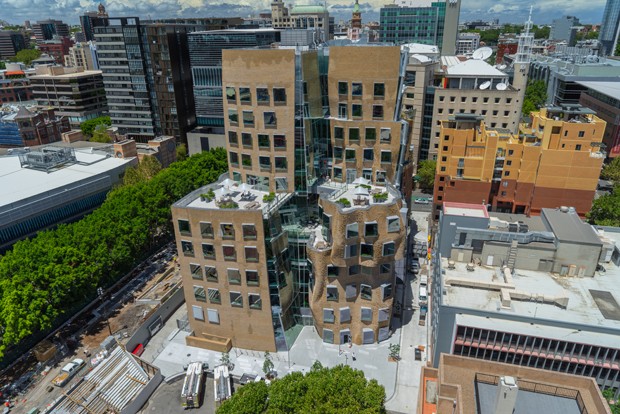

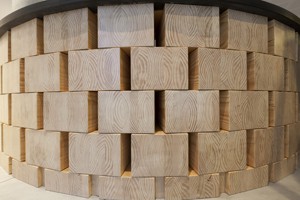 Within the 14 storey business school, which was designed from the inside-out, spaces were conceived to encourage collaboration, dialogue and chance encounters between students and teachers. From the two oval classrooms which were inspired by Thomas Jefferson’s designs for the University of Virginia to the curvaceous ply perimeter seating in the student commons and a sculptural stainless steel staircase, fixed points are kept to the minimal.
Within the 14 storey business school, which was designed from the inside-out, spaces were conceived to encourage collaboration, dialogue and chance encounters between students and teachers. From the two oval classrooms which were inspired by Thomas Jefferson’s designs for the University of Virginia to the curvaceous ply perimeter seating in the student commons and a sculptural stainless steel staircase, fixed points are kept to the minimal.
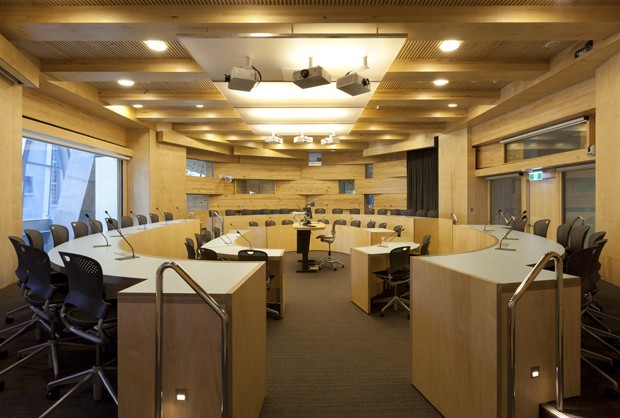
Constructed from approximately 150 large laminated timber beams, the oval classrooms feature the world's longest timber-concrete composite floor construction and the first in Australia. Their shape provides an intimate environment with 360 degree engagement, encouraging dialogue between all.
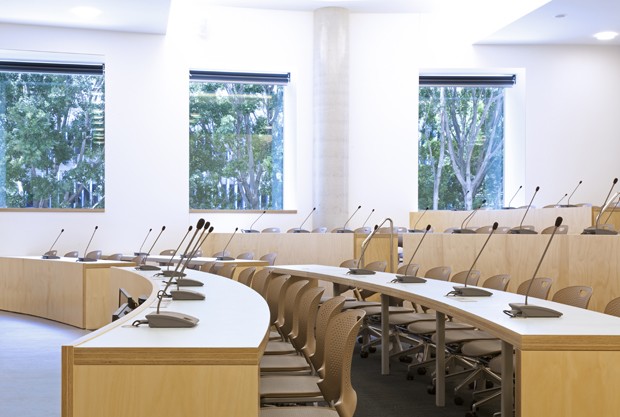
Seating 120, the collaborative theatre is stepped two rows at a time to allow students in the front row of each step to turn and join the students in the row behind for discussion and group work. The theatre features multi-screen, high-definition projection, touch-screen audio visuals and microphones along each workbench.
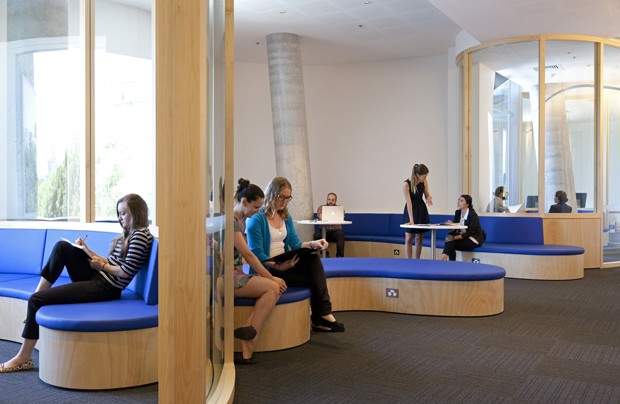
The student commons on level five features two glass work pods - one semi-circular and the other oval-shaped - and curvaceous ply joinery that provides perimeter seating.

To encourage interaction, the building makes prominent use of stairways to move people around the building. The most striking of these is a polished stainless steel staircase, which was manufactured by Queensland-based Urban Art Projects, shipped from China to Sydney in parts and assembled on site.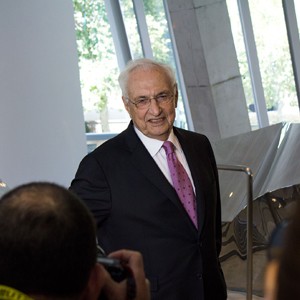
“It’s a container, maybe it’s a brown paper bag, but it is flexible on the inside. There’s a lot of room for change and movement which I think in the world today is essential,” said Gehry. (pictured right. Image: Daniel Clarke)
“As an architect, artist or whatever I am, I’m very clear about being fast on your feet, being open to change, and having a building that is not fixed.
“The tendency to build buildings for a fixed program is an obsolete notion, and we see that all over the place now.”
“I think this building can be manipulated over time and will be manipulated over time. It will change as it is used. Who knows where it’s going?”
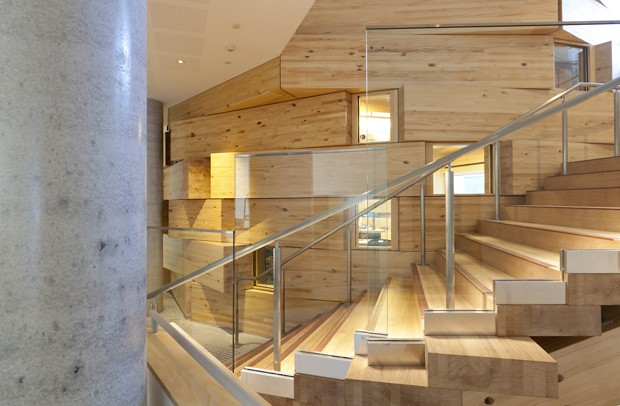
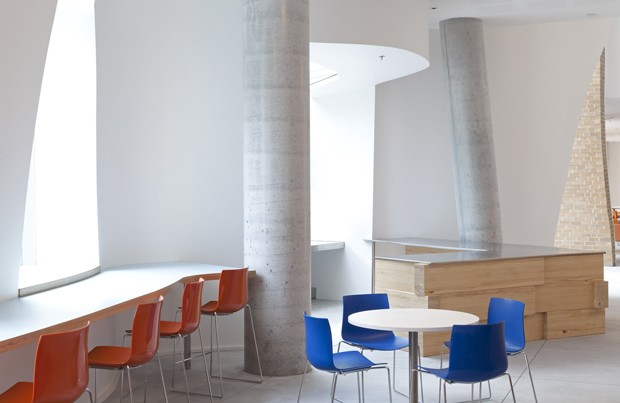
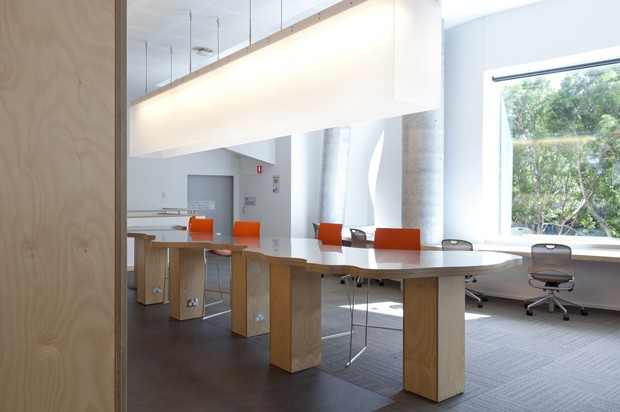
UTS worked with Gehry Partners, Daryl Jackson Robin Dyke (executive architect) and contractor Lend Lease to bring Gehry’s tree house vision into existence on time and on budget. Bound by Ultimo Road, Mary Ann Street and Omnibus Lane, the building will be a key destination on the redeveloped Goods Line that extends from Darling Harbour to Central Station.
Teaching will begin in the new UTS Business School at the beginning of Semester One on 23 February. The public can participate in tours of the building during an Open Weekend on Saturday 7 and Sunday 8 February 2015. Tour times will be between 9am and 4pm. Registration for tours will be available from midday 2 February via the UTS web page www.uts.edu.au.

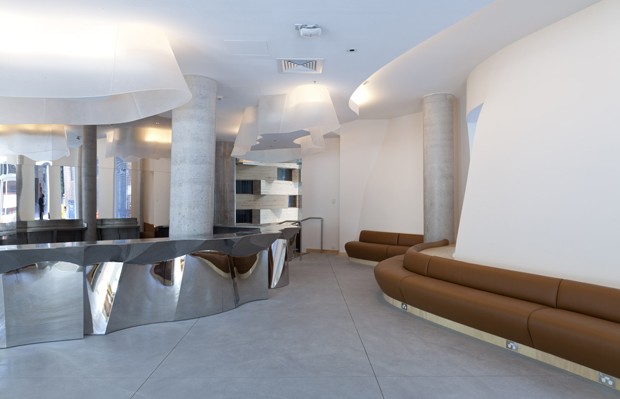

Photography by Andrew Worssam and Coptercam

